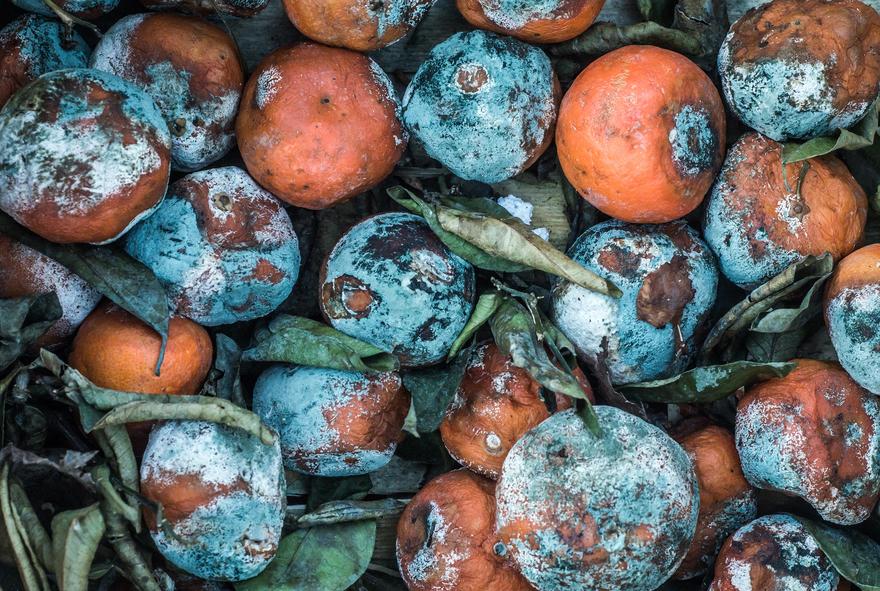Fighting food waste with AI and machine learning

Globally, food waste is estimated to amount to a whopping £2.9 trillion per year. There’s clearly enough food being produced but much of it is wasted due to operational inefficiency and severely bloated supply chains. With such a vast problem, it’s clear that a multi-pronged attack must be employed to deal with the gargantuan issue of global food waste.
The circular economy aims to disrupt the status quo by designing out waste, keeping products in use and creating closed-loop systems where waste projects are regenerative. This post looks at some of the ways in which circular principles can be applied to managing food waste.
Use data insights to make operations more efficient.
Creating closed loop systems is one way to eliminate waste, but another strategy is to reduce the size of the loop by becoming more efficient and less wasteful. Big data fuelled by advances in AI technology may hold the key to reducing global food waste; arming companies with actionable insights enables them to make efficiency gains and therefore cut down on waste.
AI technology is already being utilised commercially, leading to tremendous cost savings and efficiency gains. UK technology start-up, Winnow Vision has produced an AI-powered bin that uses a camera together with an intelligent platform to enable restaurants and retail kitchens to track what type of food is being thrown away.
Ikea is one of the companies making use of this technology to cut down on waste in their in-store kitchens. Using computer vision, Winnow’s technology can track and weigh discarded food, which means that management teams have greater granularity on the type of food being thrown away. Whereas previously kitchen staff may have had to resort to manually entering data about food waste, thanks to AI and machine learning, this process can now be fully automated, leaving staff free to focus on running the kitchen.
As food is thrown away, intelligent cameras scan and identify the type of food and calculate its weight. This data is uploaded into Winnow’s intelligent platform, with daily reports produced.
Having greater visibility on what is being thrown away and how much is wasted helps to detect potential issues. This data empowers kitchen staff to plug and gaps and understand where they could be more efficient. The results are impressive; Winnow’s technology has allowed Ikea to cut down in-store food by 50%.
Sell more, Waste Less with AI-Dynamic Pricing
On the retail side, expiry dates are a major bottleneck in terms of reducing food waste. Research indicates that on the retail side, 260,000 tonnes of food that could have been eaten is thrown away. Rather than using expiry dates, new technology such as AI-powered packaging enables consumers to gain an accurate picture of whether food can still be consumed.
Another solution is for the supermarkets to drill down into buyer behaviour in order to sell more and waste less. Tech start-up, Wasteless aims to reduce food waste through its AI-powered dynamic pricing solution. The company’s proprietary software solution uses real-time tracking, dynamically setting the product’s price based on expiry date.
This dynamic pricing model enables supermarkets to sell more of their products and thus throw less away. As well as being less wasteful, the supermarket benefit from less lost stock and a boost to their business through greater sales.
Use Forecasting and Optimisation Tools
UK supermarket, Ocado has already started to use AI-based technologies with the aim of reducing food wastage. Ocado’s smart logistics platform uses machine-learning and forecasting to intelligently predict the food that their customers need. These insights are then utilised in the supply chain to ensure that excess produce is not ordered from suppliers.
Summary
This post touches upon just some of the technologies that are being employed in the food industry to reduce and eliminate waste, but there is potential for AI to be deployed at every step along the supply chain. AI and machine learning is also being employed within agriculture to optimise food production and reduce spoilage before it reaches the supermarket.
Regeneration is another way in which food wastage is being eliminated. Some of the food being produced today cannot be sold because it is the wrong colour, size or shape, and startups, such as the Dutch company, Verspillingsfabriek are fighting food waste by turning these unused goods into soups and sauces, to be sold to restaurants.
According to McKinsey, the use of AI in the food industry is the key to unlocking a $127 billion dollar opportunity. A solution to large-scale food wastage is a marathon, rather than a sprint, but certainly AI is unlocking the doors to innovative solutions for how food is manufactured, produced and sold.
Interested in more?
Sign up to our weekly newsletter and make sure you don't miss another post.